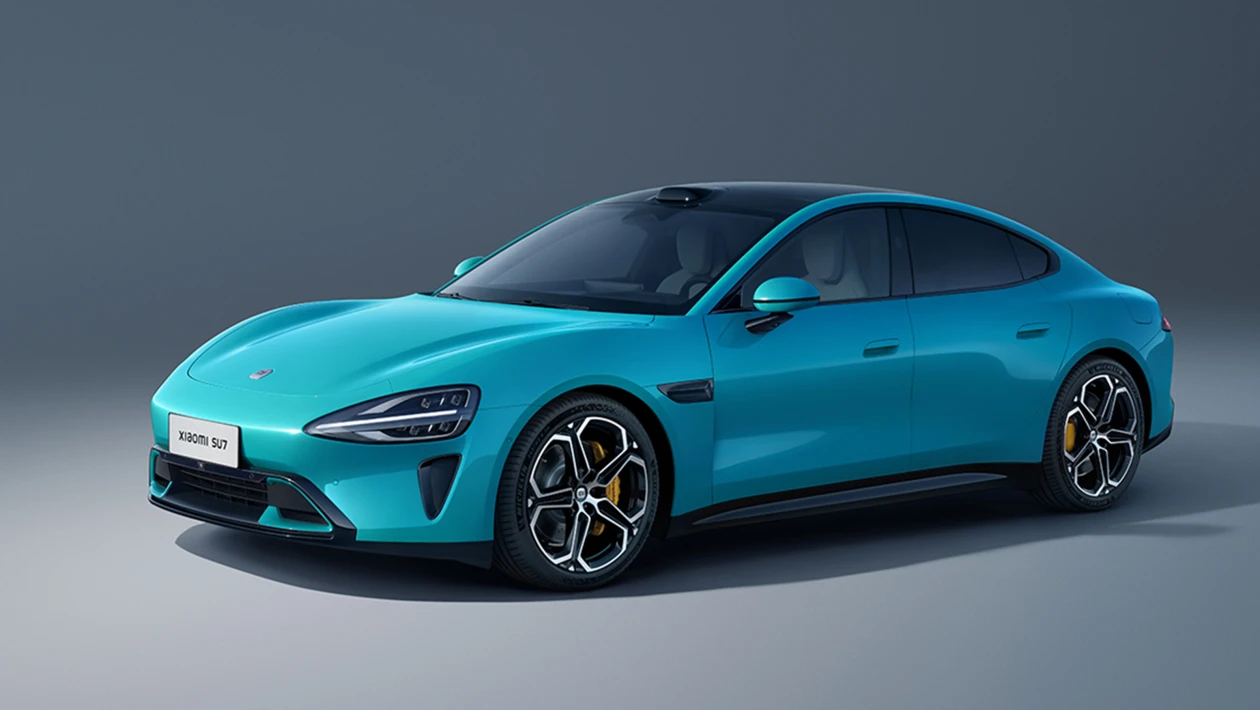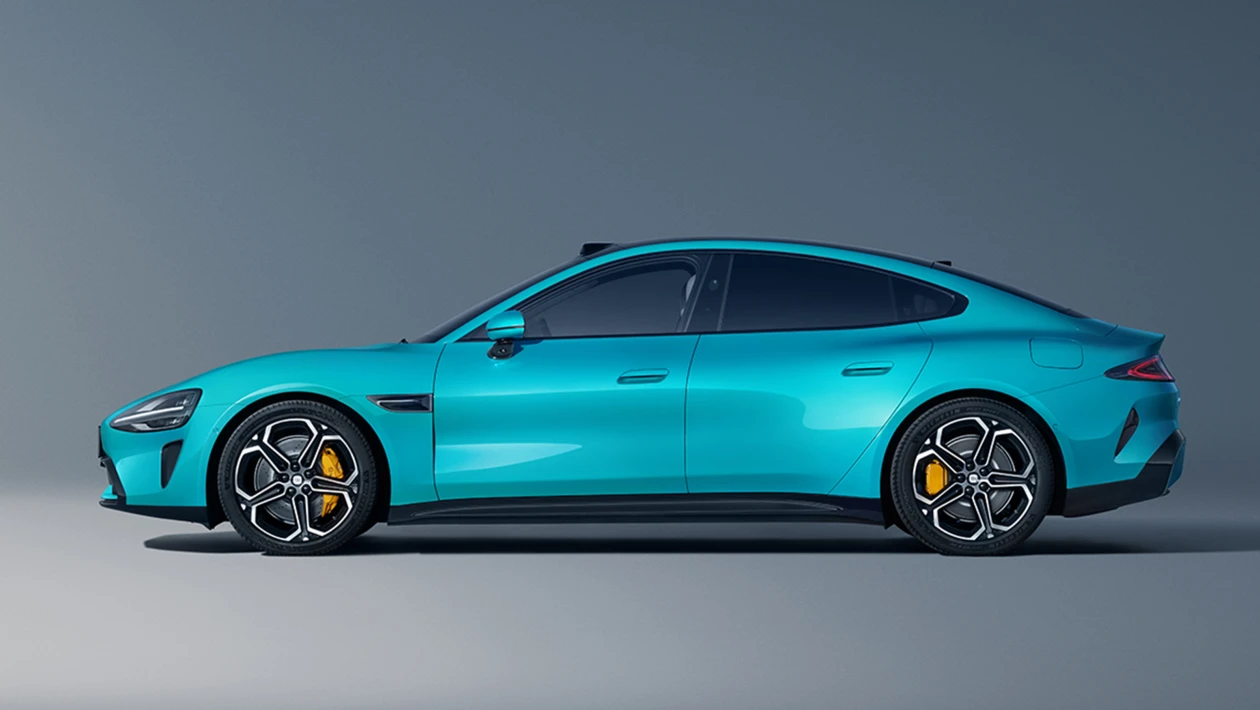The Xiaomi SU7 offers up to 800km of range and 0-100km/h time under three seconds – enough to worry a Tesla Model S or Porsche Taycan.
Roughly a decade after it was first rumoured that Apple (the maker of the iPhone) would launch its very own car we’ve still not seen anything of the sort but another smartphone manufacturer has broken out into the automotive segment: meet the Xiaomi SU7.
The Chinese phone brand is hunting some big game with its very first car, too. The all-electric saloon is set to rival the likes of the Porsche Taycan and Tesla Model S. On paper at least, it looks like the SU7 could have a fighting chance, as it features an 800-volt architecture – just like the Taycan – can accelerate from 0-100km/h in 2.78 seconds and boasts up to 800km of range courtesy of a 101kWh battery.
Those last two stats are for the range-topping SU7 Max, which features a dual-motor setup that provides all-wheel drive, and a total power output of 495kW and 838Nm of torque. However, it’s worth noting that the range figures for the SU7 are from the Chinese CLTC test cycle, not the WLTP system used in Europe.
Xiaomi also says that when the SU7 is plugged into the right charging point, drivers can add up to 220km of range from just five minutes of charging, or 510km if you’re willing to wait 15 minutes.
Helping achieve those impressive range figures is the SU7’s extremely low rag coefficient of 0.195Cd, which is considerably lower than the already very slippery 0.219Cd of the recently facelifted Tesla Model 3.
Head of design at Xiaomi’s EV division is Tianyuan Li, who was a senior designer at BMW and had a hand in the look of the polarising, yet undeniably distinctive BMW iX. To our eyes, the front end of the SU7 looks like it belongs to one of McLaren’s supercars like the 750S, due to the similar headlight shape and rounded nose design. The sloped roofline and subtly pronounced rear haunches also reminds us of the Porsche Taycan, while the SU7’s rear end with its full-width light bar closely resembles that of the BYD Seal.
The SU7 also features an integrated LiDAR sensor at the top of the windscreen, similar to those on the flagship Volvo EX90, Polstar 3 and Lotus Emeya. It’s complemented with numerous cameras and other sensors around the car that together provide data for Xiaomi’s Pilot autonomous driving technology.
Unsurprisingly for a smartphone brand, the SU7 features a very tech-centric cabin that includes a 16.1-inch central touchscreen with 3K resolution and the brand’s own HyperOS infotainment system capable of displaying multiple widgets for maps, music and driver assistance simultaneously. If you don’t want to rely solely on the enormous touchscreen, a set of physical controls and a large volume dial can be attached to the bottom of the display. There’s also an instrument panel behind the three-spoke steering wheel, as well as a head-up display.
When unveiling the SU7, Xiaomi CEO Lei Jun emphasised the additional rear cabin space in the SU7 compared to the Model S or a BMW 5 Series. The SU7 also offers 517 litres of boot space – slightly less than the latest BMW 5 Series saloon – but gets an additional 105 litres of space under the bonnet, in the ‘frunk’.






